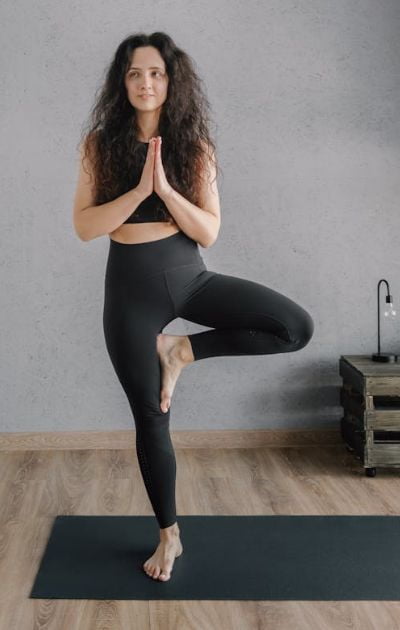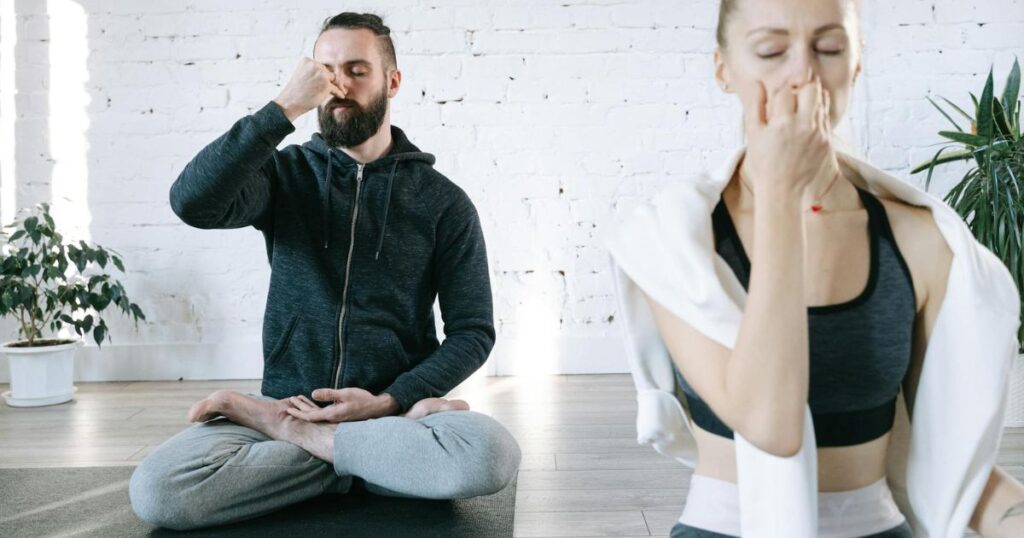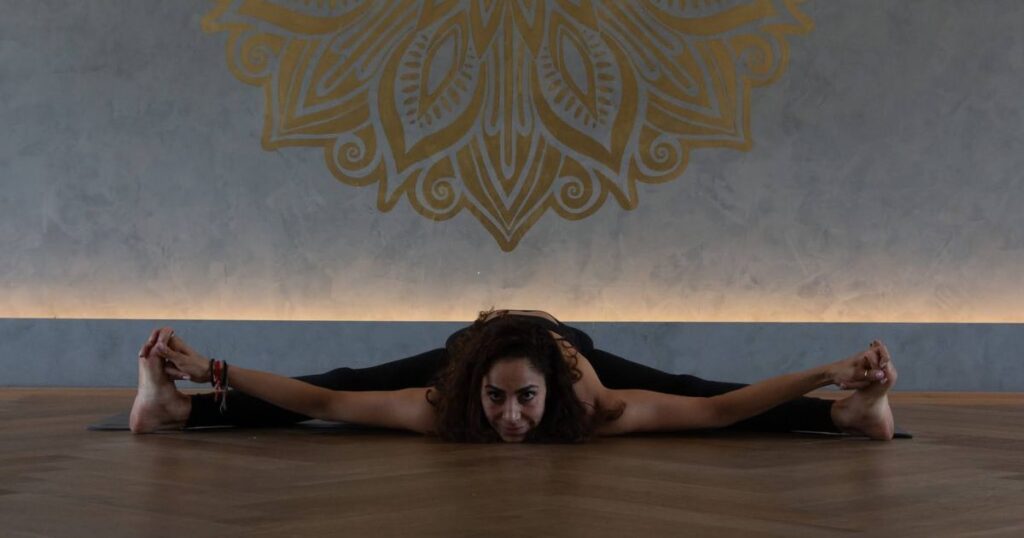Intro
So you’re new to yoga meditation? Awesome, you’re on your way to a more balanced, peaceful and happy life. Yoga meditation combines physical postures, breathing techniques and mindfulness to create a complete practice that benefits body and mind. This guide will cover everything you need to know to start a yoga meditation practice for beginners from the basics to advanced techniques.
What is Yoga Meditation?

Yoga meditation is a practice that combines the physical postures of yoga (asanas) with the mindful awareness of meditation. It has its roots in ancient Indian traditions and has been around for thousands of years. Unlike other forms of meditation that focus only on the mind, yoga meditation involves the whole body, so it’s a full body approach to wellness.
Historical Background and Origins
Yoga meditation has its roots in ancient India where it was developed as a spiritual practice. The earliest references to yoga can be found in the Rig Veda, a sacred text written around 1500 BCE. Over time yoga evolved and branched out into different forms and meditation became a part of it.
Yoga Meditation vs Other Forms of Meditation
While traditional meditation focuses on mental stillness and mindfulness, yoga meditation includes physical movement and breath control. This combination helps to ground the practitioner so it’s easier to get into a meditative state. The physical aspect also gives additional benefits like flexibility and strength.
Benefits of Yoga Meditation for Beginners

Physical Benefits
- Flexibility: Regular practice of yoga postures can increase flexibility. For example, Downward Dog and Forward Bend stretch the hamstrings and spine.
- Strength: Yoga postures build muscle strength and endurance. For example, holding Plank and Warrior II tones the muscles and increases physical strength.
- Balance: Practicing yoga improves body balance and coordination. For example, Tree Pose and Eagle Pose challenge your balance and proprioception.
Mental Health Benefits
- Reduce Stress: Yoga meditation is known for its stress-reducing properties. Studies have shown that regular practice can lower cortisol levels, the stress hormone, and reduce stress and anxiety.
- Improve Focus: The practice improves concentration and mental clarity. Techniques like Trataka (candle gazing) improve focus and attention span.
- Emotional Stability: Helps manage emotions and improve mood. Mindfulness meditation encourages emotional regulation.
Emotional Benefits
- Increased Awareness: This increases self-awareness and emotional intelligence. By observing your thoughts and feelings without judgment, you become more aware of your emotional states.
- Better Mood: Regular practice can give you a more positive outlook on life. Yoga meditation releases endorphins, the body’s natural mood lifters.
- Emotional Resilience: Helps in building emotional strength and resilience. Practices like Loving-Kindness Meditation foster compassion and emotional balance.
Long term Benefits
Consistency in your yoga meditation practice can give you long-term benefits like overall well-being, better mental health, and a balanced life. Consistency can also give you better sleep, improved cognitive function, and a stronger immune system.
Start Your Yoga Meditation for Beginners



Choose Your Yoga Mat and Comfortable Position
Choose the right yoga mat for a comfortable practice. Look for a mat that gives you enough cushioning and grip. For beginners start with simple seated postures like Sukhasana (Easy Pose) or Vajrasana (Thunderbolt Pose). Just find a position where you can sit for long.
Types of Yoga Mats
| Type | Description | Best For |
| Standard | Basic mat with minimal cushioning | General use |
| Thick | Extra cushioning for more comfort | Beginners, people with joint issues |
| Eco-Friendly | Made from natural materials like rubber or cork | Environmentally conscious practitioners |
| Travel | Lightweight and foldable for easy transport | Travelers |

Get Set
A peaceful space is key to a good yoga meditation practice. Pick a quiet, clutter-free space where you won’t be disturbed. Use props like cushions and blankets to make it more comfortable.
Tips Yoga Meditation for Beginners
- Quiet Room: Choose a room where you won’t be interrupted.
- Declutter: Get rid of anything you don’t need.
- Props: Use cushions, blankets, and blocks.
- Add a Personal Touch: Add things that inspire you, like candles, plants or art.

Basic Breathing
Mindful breathing is the foundation of yoga meditation. Start with simple breathing exercises like Diaphragmatic Breathing or Nadi Shodhana (Alternate Nostril Breathing). These will calm the nervous system and prepare the mind for meditation.
Basic Breathing Exercises for Yoga Meditation for Beginners
- Diaphragmatic Breathing: Place one hand on your chest and the other on your abdomen. Inhale through your nose, your abdomen should rise. Exhale slowly through your mouth.
- Nadi Shodhana (Alternate Nostril Breathing): Close your right nostril with your thumb and inhale through the left nostril. Close the left nostril with your ring finger and exhale through the right nostril. Continue for a few minutes.
- 4-7-8 Breathing: Inhale for 4, hold for 7, exhale for 8. Repeat for a few minutes.
Basic Yoga Poses for Yoga Meditation for Beginners

Yoga poses are part of yoga meditation. Here are some beginner poses to start with:
- Sukhasana (Easy Pose): A simple seated pose to relax.
- Vajrasana (Thunderbolt Pose): Good for digestion and calm the mind.
- Balasana (Child’s Pose): A resting pose to stretch the back and relax the body.
Transitions
When transitioning between poses, move slowly and mindfully. Focus on your breath and be aware of your body. This will help you stay present and avoid injury.
Example Sequence for Beginners
- Sukhasana (Easy Pose): Sit with your legs crossed. Focus on your breath for a few minutes.
- Vajrasana (Thunderbolt Pose): Move into a kneeling position. Sit back on your heels and place your hands on your thighs.
- Balasana (Child’s Pose): From Vajrasana, stretch your arms forward and lower your torso to the floor. Rest your forehead on the mat and breathe deeply.
- Tadasana (Mountain Pose): Stand up slowly, and bring your feet together. Reach your arms up and stretch your whole body.
- Shavasana (Corpse Pose): Lie down on your back with your arms by your sides. Close your eyes and relax.
How to Start a Mindfulness Meditation Practice



What is Mindfulness Meditation?
Mindfulness meditation is being present. It’s being aware of your thoughts, feelings, and physical sensations without judgment.
Techniques for Mindfulness Yoga Meditation for Beginners
- Body Scan: Focus on different parts of your body, observe any sensations. Start from your toes and move up to your head.
- Breath Awareness: Focus on your breath as it enters and leaves your nostrils.
- Mindful Observation: Observe your surroundings with curiosity and openness. Notice the colors, shapes and textures around you.
Using a Focal Point
Using a focal point, like a candle flame or an object, can help you stay focused during meditation. Especially helpful for beginners who find it hard to keep their minds from wandering.

Example Mindfulness Meditation Practice
- Sit: Choose a comfortable position, sitting or lying down.
- Settle: Close your eyes and take a few deep breaths to settle into your practice.
- Body Scan: Do a body scan, from toes to head.
- Breath Awareness: Shift your focus to your breath. Observe the natural rhythm of your breathing.
- Focal Point: If your mind starts to wander, gently bring your attention back to your focal point.
- Close: After 10-20 minutes, slowly bring your awareness back to your surroundings. Open your eyes and take a moment to reflect on your practice.
Guided Yoga Meditation for Beginners

Why Guided Meditation
Guided meditation gives you instructions, step by step. It helps you stay focused and structured.
How to Find a Meditation Teacher
A meditation teacher can give you personalized guidance and support.
At Infinite Being Academy, an international educational hub founded by Yair Sagy, we offer you specialized meditation courses.
Why a Meditation Teacher
- Personalized guidance: Customized advice and instructions based on you.
- Accountability: Regular check-ins to keep you on track.
- Feedback: Constructive feedback to help you improve.
- Support: Emotional and spiritual support throughout your journey.
Get a free 15-minute consultation with meditation Teacher Yair Sagy.
Common challenges and how to overcome them

Dealing with distractions
Distractions are a major challenge for beginners. If your mind wanders, gently bring your attention back to your focal point or breath. Be patient and don’t be too hard on yourself.
How to deal with distractions
- Set a Timer: Use a timer so you don’t have to think about the time.
- Minimize external distractions: Choose a quiet space and turn off your phone.
- Use guided meditations: Follow along with a guided meditation to keep your mind engaged.
Physical sensations
You’ll experience physical sensations like discomfort or restlessness. Observe them without judgment and adjust your posture as needed. Over time your body will adapt and you’ll find it easier to sit still.
How to manage physical sensations
- Adjust your posture: Make small adjustments to find a better position.
- Use props: Cushions, blankets, and blocks can give you extra support.
- Practice regularly: Consistent practice will help your body adapt to the postures.

Mental hurdles
Racing thoughts and anxiety can be tough to deal with. Mindful breathing and body scan can help calm your mind. Remember it’s a process and it’s okay to have days when meditation feels harder.
How to overcome mental hurdles
- Acknowledge your thoughts: Recognize your thoughts without judgment and let them go.
- Use mantras: Repeat a calming phrase or word to focus your mind.
- Practice patience: Remember meditation is a journey and progress takes time.
Creating a daily yoga meditation habit

Why regular practice
Consistency is the key to getting the benefits of yoga meditation. Set a specific time each day for your practice, even if it’s just a few minutes.
How to fit meditation into your daily routine
- Start small: Begin with short sessions and gradually increase the time.
- Set reminders: Use alarms or calendar reminders to stay on track.
- Create a ritual: Establish a pre-meditation ritual like lighting a candle or playing calming music.
Realistic goals and expectations
Set achievable goals for your practice. Remember progress takes time and be patient with yourself. Celebrate small wins and stay committed to your practice.
Example Routine
- Morning: Start your day with a 5-minute breathing exercise.
- Afternoon: Take a 10-minute break for a body scan meditation.
- Evening: End your day with a 15-minute mindfulness meditation session.
Your yoga teacher

How a yoga teacher can guide and support beginners
A yoga teacher can give you valuable insights, correct your posture and offer personalized advice. They can help you go deeper into your practice and avoid common mistakes.
Find the right teacher for you
Look for a teacher who resonates with you and understands your goals. Try out a few classes to see if their teaching style is for you. Online reviews and recommendations can also help.
Why attend yoga classes
Group classes give you a sense of community and motivation. You can learn from others and get feedback from your teacher immediately.
At Infinitive Being Academy, you can join one of our live, interactive, online programs.
- Please message to join Yair Sagy for live Yoga classes.
- To watch Online Yoga classes
How to choose a teacher
- Credentials: Make sure the teacher is certified and experienced.
- Teaching style: Find a style that suits you and your goals.
- Personality: Choose a teacher you feel comfortable with and inspired by.
Advanced techniques and practices

More advanced meditation techniques
As you go deeper you may want to explore advanced techniques like mantra meditation or Kundalini yoga. These require a higher level of commitment and understanding.
Example advanced techniques
- Mantra meditation: Repeating a specific word or phrase to focus the mind.
- Kundalini yoga: Combining dynamic movement, breath control and chanting.
- Yoga Nidra: A guided meditation practice that induces deep relaxation.
How will you know when you’re ready to advance
You’ll know when you’re ready to advance when you feel comfortable with the basics and want more. Listen to your inner voice and ask your teacher for guidance.
Resources for Deepening Your Practice
- Books: Light on Yoga: The Definitive Guide to Yoga Practice (English Edition)
- Youtube Channel:Yoga with Yair
- Online Courses: IBA courses
FAQs

Is yoga meditation for everyone?
Yes, yoga meditation is for most people. But if you have any medical conditions or concerns consult with your doctor.
How long should a beginner meditate?
Start with 5-10 minutes and gradually increase as you get more comfortable. Aim for at least 20 minutes per session for maximum benefits.
What if I can’t sit still or focus?
It’s normal to struggle with sitting still or focusing at first. Be patient and use techniques like mindful breathing or guided meditation to help you stay focused.
Will yoga meditation help with sleep?
Yes, yoga meditation can help with sleep. Practicing mindfulness and relaxation techniques will make it easier to fall asleep and stay asleep.

End
Starting a yoga meditation practice is a journey to a better body, mind, and heart. By following the tips and techniques in this article you’ll be well on your way. Remember the most important thing is to be consistent and practice with an open heart and mind.
Subscribe
If you liked this article subscribe below to our newsletter for more yoga and meditation tips. This article has everything you need to know to get started with yoga meditation.










